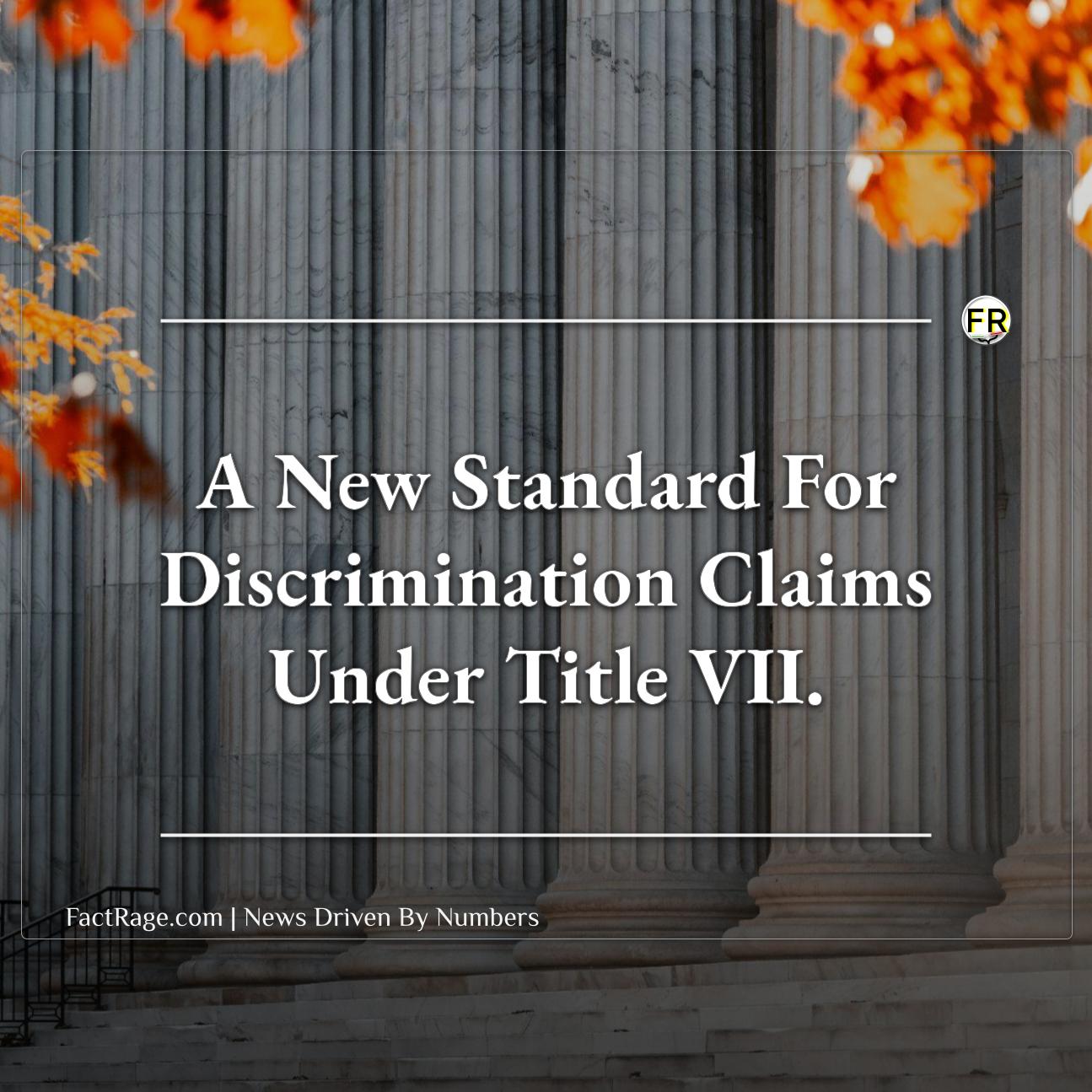WASHINGTON, DC – The U.S. Supreme Court on Thursday unanimously ruled that “reverse discrimination” lawsuits no longer face a higher legal standard, making it easier for individuals from majority groups to pursue claims of employment discrimination.
Key Insights:
- Unanimous Ruling – The Supreme Court’s decision in Ames v. Ohio Department of Youth Services was unanimous, eliminating the “background circumstances” requirement for majority-group plaintiffs in discrimination cases.
- Impact on Title VII – The ruling clarifies that Title VII of the Civil Rights Act of 1964 provides the same protections to all individuals, regardless of their membership in a minority or majority group, rejecting lower court precedents that imposed a higher bar for majority-group plaintiffs.
- Case Remanded – The case of Marlean Ames, who alleged discrimination based on her sexual orientation, will return to lower courts to be re-evaluated under the newly clarified standard.
This landmark decision could significantly alter the landscape of employment discrimination litigation across the country.
What the Unanimous Supreme Court Decision Means for Discrimination Claims

The Supreme Court’s ruling in Ames v. Ohio Department of Youth Services centered on the interpretation of Title VII of the Civil Rights Act of 1964, which prohibits employment discrimination based on race, color, religion, sex, or national origin. Previously, some federal appeals courts, including the Sixth Circuit, had imposed a “background circumstances” test for plaintiffs from majority groups alleging discrimination. This test required these plaintiffs to show additional evidence suggesting that their employer was “that unusual employer who discriminates against the majority”—a hurdle not typically applied to minority-group plaintiffs.
Justice Ketanji Brown Jackson, writing for the unanimous court, stated that Title VII “draws no distinctions between majority-group plaintiffs and minority-group plaintiffs.” She emphasized that the statute protects “any individual” from discrimination, leaving no room for courts to impose special requirements on majority-group plaintiffs alone. This decision aligns with the principle that civil rights laws should apply equally to all individuals.
How This Ruling Changes the Landscape for Employees
The case involved Marlean Ames, a heterosexual woman who sued the Ohio Department of Youth Services after she was denied a promotion and later demoted. She alleged that these actions were due to her sexual orientation, with the positions going to LGBTQ+ colleagues. Lower courts had dismissed her claim, asserting she failed to meet the “background circumstances” standard. The Supreme Court’s ruling vacates that decision, sending Ames’s case back to the lower courts for reconsideration under the standard that now applies to all plaintiffs in Title VII cases.
This ruling means that in the 20 states and the District of Columbia where this “background circumstances” test was previously applied, it will no longer be a requirement. This shift could make it easier for individuals who are white, male, or heterosexual to pursue discrimination claims, potentially leading to an increase in such lawsuits.
The Broader Implications for Employers

While the ruling specifically addresses employment discrimination under Title VII, it contributes to a broader judicial trend that has recently seen the Supreme Court curtail affirmative action policies in college admissions. In cases like Students for Fair Admissions v. Harvard/UNC, the Court has emphasized individual treatment over race-conscious considerations. The Ames decision extends this principle of individual rights to employment, reinforcing that federal civil rights laws should protect all individuals equally from discrimination, regardless of their demographic group.
Employers nationwide may need to review their anti-discrimination policies and practices to ensure they are aligned with this clarified standard. The decision underscores that any form of discrimination based on protected characteristics is prohibited by Title VII, irrespective of whether the plaintiff belongs to a historically disadvantaged or majority group.









